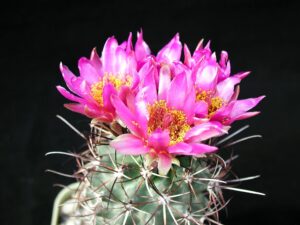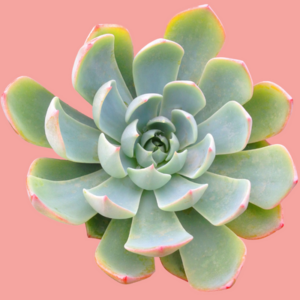Spring is a time of renewal, a season characterized by the vibrant eruption of life and color. Among the myriad of flora that bloom during this time, spring cacti, particularly the renowned species such as the Easter cactus and the orchid cactus, stand out as intriguing specimens. Their exquisite blossoms can be a highlight in any garden, but to unlock their full potential, a keen understanding of their care is paramount. This comprehensive guide explores the nuances of caring for these prickly beauties, promising not only to beautify your space but also to kindle a curious fascination for the botanical world.
Engaging with the enigmatic nature of spring cacti can shift your perspective on plant care, transforming it from a mundane task into a rewarding journey filled with the anticipation of stunning blooms.
Understanding the Basics of Spring Cacti
Spring cacti belong to a diverse family of plants that exhibit unique adaptations to thrive in their native ecosystems. They are not true cacti as many commonly perceive them; instead, they belong to the genera Schlumbergera and Disocactus, among others. Unlike their desert-dwelling relatives, these tropical and subtropical plants hail from rainforests where they primarily grow as epiphytes. This means they do not derive nutrients directly from the soil but rather from the organic debris collected in the nooks and crannies of trees. This pivotal characteristic should inform how you care for your spring cactus.
The environment in which a spring cactus flourishes is typically warm and humid, but protection from direct sunlight plays an essential role in its overall health. That said, the blooms that adorn these plants are often fleeting yet breathtaking. Understanding their blooming cycle is crucial; many species require a chill during the winter months to trigger that magnificent spring flowering. This stipulates a need for careful temperature management.
Setting the Stage: Potting and Soil Considerations
The first step in establishing a thriving spring cactus is appropriate potting. A well-draining pot is essential, as excessive moisture can lead to detrimental root rot. Choose a pot with drainage holes to prevent water from pooling at the bottom. For the soil, a blend that consists of high-quality potting mix combined with perlite or coarse sand generally suffices. This combination facilitates proper drainage while providing enough organic material for nutritional needs.
When potting, take caution not to bury the cactus too deep; the root system should be spread gently, and only the base of the plant should rest against the soil. Remember, spring cacti don’t like to have their roots disturbed, so provide a stable environment with minimal repotting. This ties directly into their need for a slightly cramped pot, which can encourage blooming as they mature.
Illuminating Care: Light and Temperature Requirements
Light plays a pivotal role in the overall vitality of spring cacti. Unlike most cacti that revel in the brilliance of full sun, these plants thrive in bright, indirect light. A location near a window that filters the sun’s rays is ideal. Too much direct light can scorch their delicate leaves, leading to an unhealthy appearance. Conversely, inadequate light can hinder their bloom formation, leaving you yearning for those stunning flowers.
During the growing season, which spans from late winter through summer, spring cacti prefer temperatures between 70°F and 80°F (21°C to 27°C) during the day and slightly cooler temperatures at night. However, when preparing for blooming, a nighttime temperature drop to about 50°F (10°C) is beneficial. This cold treatment mimics their natural habitat and signals the plant to prepare for flowering. As a result, it’s imperative to stagger your temperature control as spring approaches, ushering the cactus into its blooming phase.
Nourishment and Hydration: Watering Best Practices
Watering spring cacti requires a discerning approach. These plants are highly susceptible to overwatering, leading to root degeneration. Instead, allow the top inch of the soil to dry out completely before applying water. During the growing season, moderate watering will suffice; usually, every 2-3 weeks will nourish the plant without causing harm. The introduction of liquid fertilizer diluted to half strength every month during this period can promote growth and ensure that the plant has the nutrients necessary for spectacular blooms.
As winter approaches, reduce watering significantly. During dormancy, the plant conserves energy and does not require as much moisture. Over the winter months, a brief dash of water every month is typically sufficient to maintain its health. Encouraging a period of dormancy not only aligns with the cactus’ natural cycle but also prepares it for the eventual burst of exquisite flowers.
Anticipating the Bloom: The Joy of Patience
Once you’ve established proper care, it is time to revel in the anticipation of blooms. The stunning flowers that emerge in spring are often described as an encapsulation of the vibrant spirit of the season. When the buds begin to swell and show signs of color, the excitement is palpable. Blooming often occurs in late spring, typically around Easter, and can last several weeks, providing a spectacular display.
In conclusion, caring for a spring cactus encompasses a blend of knowledge and intuition. From understanding the special needs in terms of potting and lighting to establishing an effective watering routine, every aspect fosters a nurturing environment. Embracing this care regimen not only nurtures the plant but also reinforces your connection to nature. Through patience and awareness, the culmination of these efforts is the enchanting beauty of spring cactus blooms, a reminder of the delicate balance between effort and reward in the blooming journey.




Leave a Comment